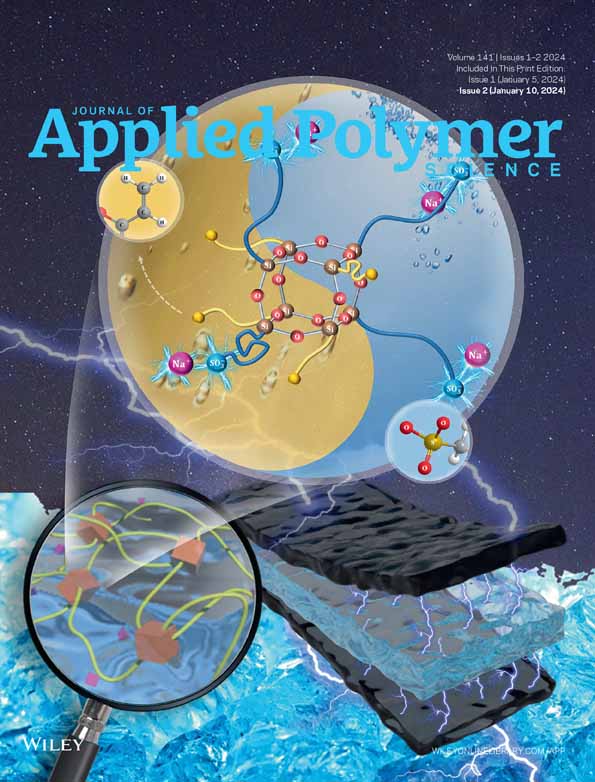Synthesis, polymerization and thermal properties of bio-based benzoxazine resins containing imide or amide functionality
Abstract
Two novel bio-based benzoxazine monomers containing imide or amide group (HPIDD-fa and HPBA-fa) were synthesized from raw materials of benzoyl chloride/phthalic anhydride, tyramine, furfurylamine and paraformaldehyde via a two-step reaction. Fourier transform infrared spectroscopy (FT-IR), proton and carbon nuclear magnetic resonance (NMR) spectroscopies were performed to characterize the structures of the benzoxazine monomers. The curing behavior was investigated by using differential scanning calorimetry (DSC) and in situ FT-IR, and the DSC results indicate that the peak curing temperatures of HPIDD-fa and HPBA-fa are centered at 248.5 and 230.1°C, respectively. In addition, thermogravimetric analysis (TGA) suggests that the newly developed bio-based benzoxazine-derived polybenzoxazines present excellent thermal stability with Td10 (temperature at 10% weight loss) of 385 and 368°C for poly(HPIDD-fa) and poly(HPBA-fa), respectively. The current investigation suggests that our newly obtained bio-based thermosetting resins are promising materials for high-tech applications.
Open Research
DATA AVAILABILITY STATEMENT
The data that support the findings of this study are available from the corresponding author upon reasonable request.




